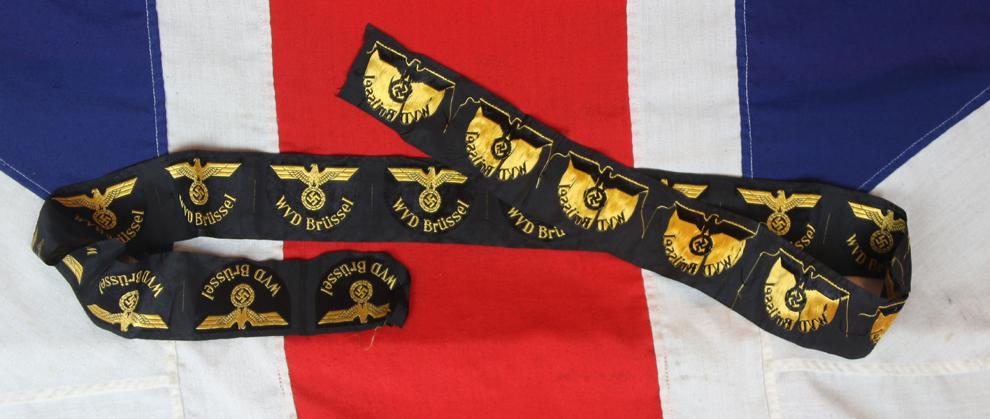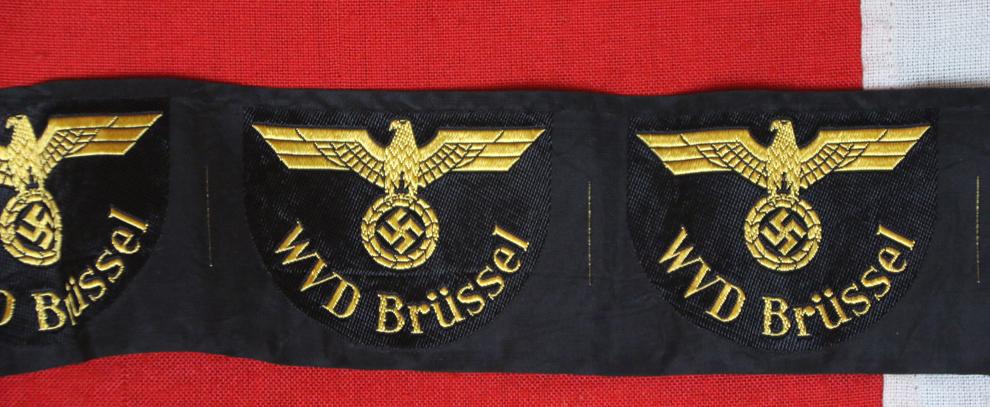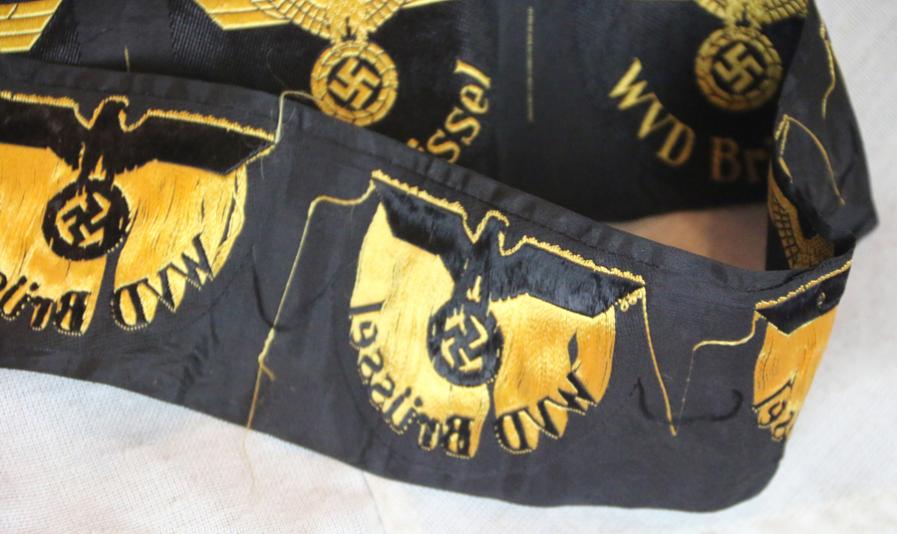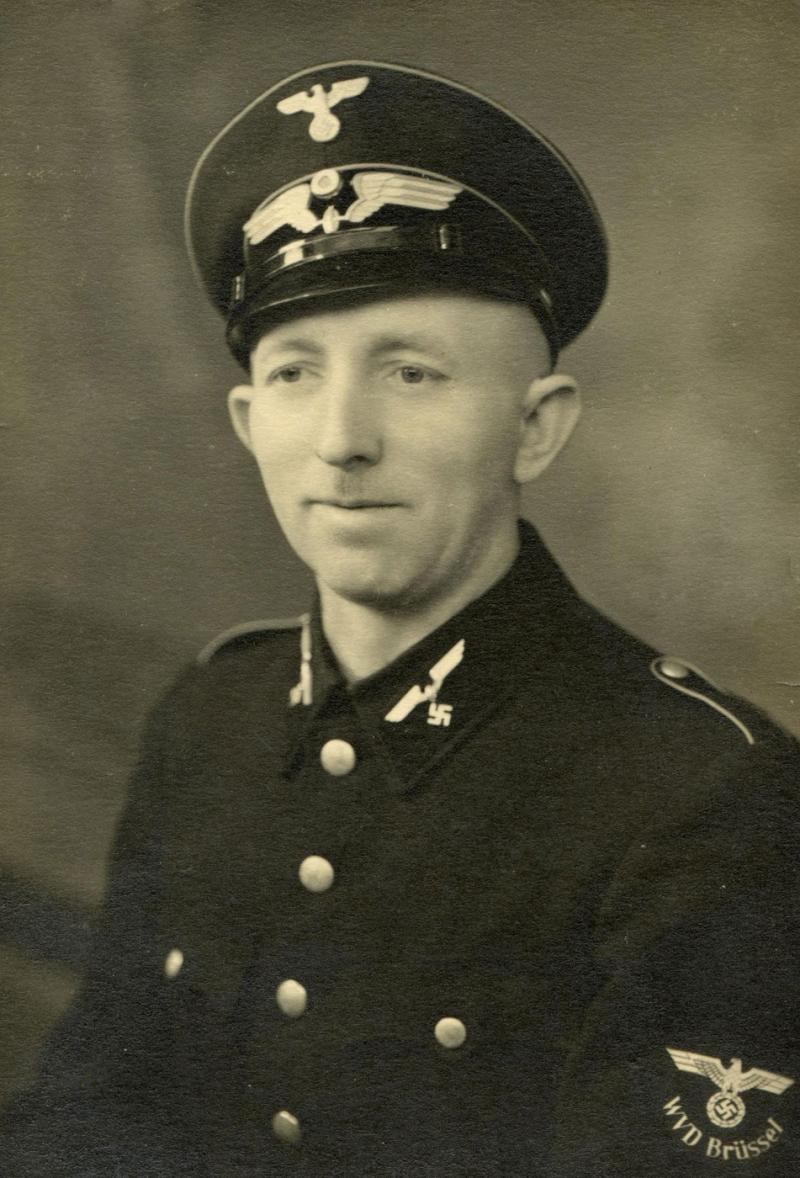An Amazing & Most Rare Un-Issued Fully Intact Strip of 18 Third Reich Reichsbahn Ärmeladler – WVD BrusselsArm Badges of the German Railways Armed Forces Traffic Directorate (WVD), Brussels Division
(Ärmeladler) of the WVD (Wehrmachtverkehrsdirektion) Brussels. WVD, " Wehrmacht Verkehrsdirektion" (Armed-forces Traffic-directorate),
Arm badge worn by personnel of the German Railways Armed Forces Traffic Directorate (WVD), Brussels Division. A machine woven, right facing eagle with outstretched wings and a wreathed, mobile swastika in its talons, positioned above the arching script, "WVD Brüssel." All of the threads are bright golden-yellow, against a half-moon. The insignia indicates service with the "Brüssel" division of the "Wehrmachtverkehrsdirektion.". Still on their original un-cut factory roll backing material.
WVD = Wehrmachtverkehrsdirektion
These badges were introduced in September 1941 superseding the German Railway cuff-titles, themselves only introduces some seven months previously, in February 1941. They were worn on the left upper arm of the uniform and usually cut or folded to produce a pointed or curved lower edge. The badges combined the German national eagle emblem above the initials of the relevant Railway Directorate, of which there were four (WVD, HVD, RBD & RVD), plus the specific Railway Division, which was usually based on large and important marshalling yards or railway areas. This branch of the Wehrmacht under the Nazi regime is responsible for controlling the operation of the national railways . It was created during the reorganization in 1937 of the Deutsche Reichsbahn into four directories.
It moved to Paris on June 21 , 1940 and the first contacts between SNCF and WVD took place on June 26 , 1940. The headquarters of the WVD was first in 36 of Avenue Kléber, then at 29,rue de Berri, in the 8 th arrondissement, near the Champs Elysées. It is the vice-president of the direction of the regional Reichsbahn of Hanover, Hans Münzer, who was named supreme commander (Kommandeur) of this authority of control of the French railways.
In August 1940, the operation of the network in occupied areas , outside Alsace-Lorraine, is transferred as a whole to the WVD located in Paris. A WVD is also installed in Brussels, which has jurisdiction over part of the North of France.
The SNCF retained ownership of the equipment which remained to it after the German requisitions, its trains were driven by French railway workers, but it was placed under the surveillance of WVD which subjected the personnel to German war laws and imposed the presence of 6500 German railway workers in stations, depots and operating sites responsible for ensuring the proper functioning of the company on site. Its goal is then to restart the French railway services in order to optimize its transport time, allow its use by the German forces, contribute to the German economy and among other things to continue to provide support to the ' invasion of North Africa . For these purposes, prisoners of war who have the skills of railway workers are released. It will then transit via French railways no less than 45 million tonnes of minerals between Italy and Germany Individual examples now sell for around £65 to £95 each
Code: 23785
1245.00 GBP







